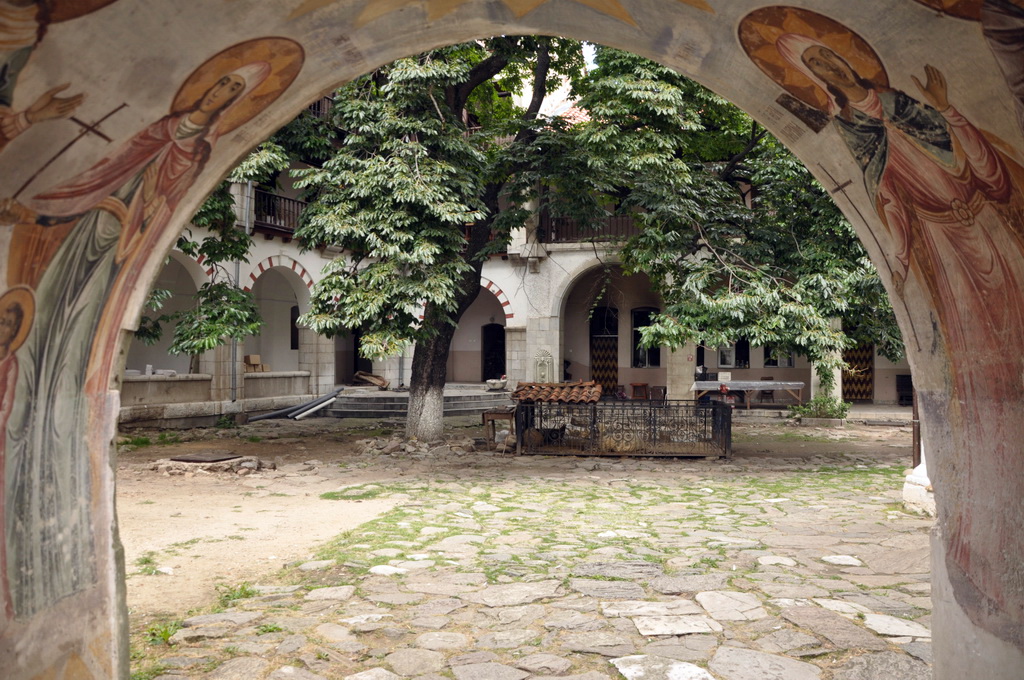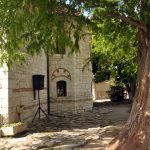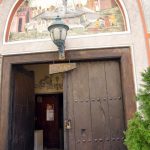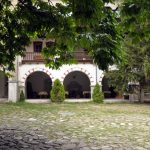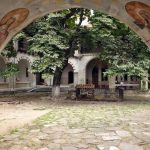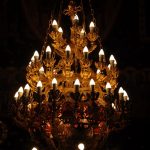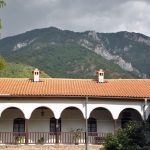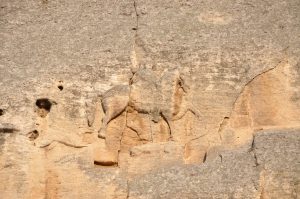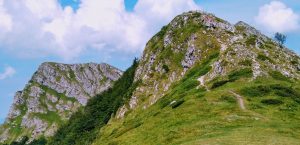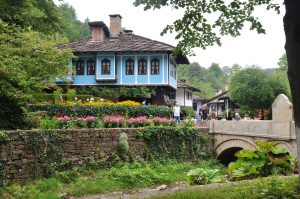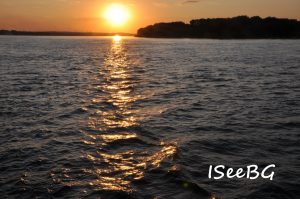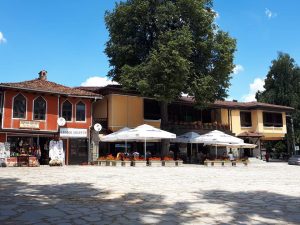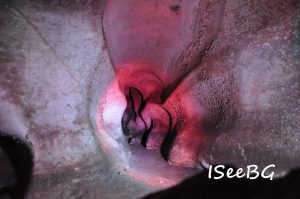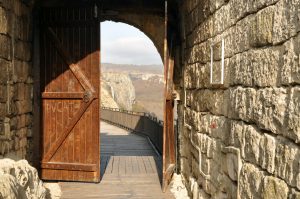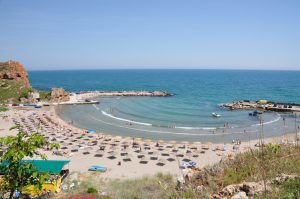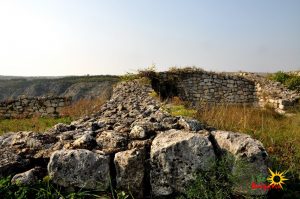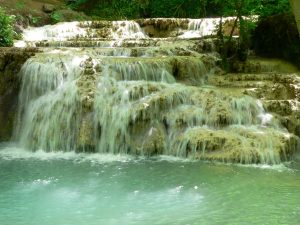The Bachkovo Monastery of the Dormition of the Theotokos (Bulgarian: Бачковски манастир “Успение Богородично”, Bachkovski manastir, Georgian: პეტრიწონის მონასტერი, Petritsonis Monasteri), archaically the Petritsoni Monastery or Monastery of the Mother of God Petritzonitissa is a major Eastern Orthodox monastery in Southern Bulgaria. It is located on the right bank of the Chepelare River, 189 km from Sofia and 10 km south of Asenovgrad, and is directly subordinate to the Holy Synod of the Bulgarian Orthodox Church. The monastery is known and appreciated for the unique combination of Byzantine, Georgian and Bulgarian culture, united by the common faith.
Another medieval church of the monastery is the Archangels’ Church dating back probably to the 12th century, the vaulted open narthex of which was painted by Zahari Zograf in 1841. The inside of the church was painted by the artist Joan Mosch in 1846.
Jujube tree
The broad branches of a jujube, brought from Georgia more than two centuries ago, stretch over the courtyard. A famous jujube brandy (djindjifilova rakia) is destilled in the monastery
Works of art
The museum of the monastery has a rich exhibition of church plate, icons, books, the sword of Friedrich Barbarossa, a sultan’s firman from 1452, a wood-carved cross with miniatures. A fresco of the Doomsday, painted by Zahari Zograf in 1850, is retained in the Saint Nicholas Church and is thought of as one of the most interesting works of art of the Bulgarian National Revival.
The “Panorama” mural, which runs along the outside wall of the refectory, represents the history of Bachkovo monastery pictorially. It provides a bird’s eye view of the monastery with all the surrounding buildings at the time of the painting.
Under the influence of different atmospheric conditions like rain, snow, fog, cold, wind, the biggest scenic mural on the Balkan peninsula has preserved the freshness of its paint. The painter Alexi Atanasov, a Bulgarian from the town of Negush, worked in this region in the 19th century.
The year of the decoration can be determined by an inscription that was on the outside walls of the western monastery wing, which was burned in 1902. This inscription read:
“The following depiction was finished under the ministry of Abbot Cyril on 22 July 1846. The depiction has been made by my own hand, Alexi Atanasov from Negush.”
As a model, the painter used a copper print that was made in Vienna with the financial help of the merchant from Samokov, Petar Rana, in 1807. Alexi Atanasov added valuable details and pictorial elements of his own. The “Panorama” mural gives us rich information about the architectural ensemble of the monastery in the 19th century. The northern facades of the churches St Archangels Michael and Gabriel and The Holy Virgin, were painted, too. The monastic buildings with their big buttresses on the river side can be seen. Central place was given to the founders of the monastery, who were depicted in monastic attire. The Emperor Alexius Comnenus is among them. At their side are the donors from the 14th century: George and Gabriel. The surroundings of the monastery are shown: the nunnery in Assenovgrad; Assen’s fortress; the chapels nearby. The painter gave us a good idea from ethnographical point of view, about the clothing of the aristocracy from Plovdiv and the festal clothing of the women in the Rhodopes, through the group of the people that are following the Procession of the Miraculous Icon. Details, such as the well in the northern courtyard and the belfry in the Church of the Archangels, are included. Scenes from the passionals of the two Saints George and Demetrius are depicted at the side of the “Panorama”.
The “Panorama” mural is exceptionally interesting because of its sheer size and because of its artistic impact and craftsmanship. The paints were made after a recipe by the painter himself, probably from grasses mixed with egg emulsion. The used painting technique is “fresco buono,” which is a mural art of painting that is applied on a smooth moist plaster. When the water evaporates the images emerge on the surface. The implication of this technique, with the great deal of artistic mastery, is why these murals look fresh today.
map:
source: en.wikipedia.org
